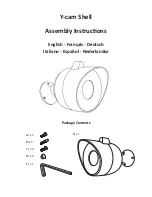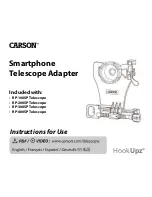
5. Turn power off and place the amplifier back into the Stereo mode with output
loads connected to each channel.
. BIAS
1. Let the amplifier cool down to room temperature.
2. With an input amplitude of 1.3OVrms increase the input frequency to 2OkHz. Reduce the
input signal 20dB (80%) from full output. Adjust the crossover trimpot VR43
and
VR166 (CH2) for about a 4OOmVpk-pk crossover spike protruding from the noise trace
on the oscilloscope. It will be necessary to have the oscilloscope measure unfiltered
distortion from the amplifier in order to see the crossover spike. It is necessary to
disable the 80kHz lowpass filter on the analyzer for this test. Further trim so that
the total distortion for that channel is less than 0.1% THD+N.
3. With the trim settings achieved, and with no signal plugged into the amplifier and with an
8 ohm load, verify that the AC idle current from the AC service is no more than 1 .O
amperes.
4. Let the amplifier cool down and check channel 2.
. SHORT CIRCUIT CURRENT
1. Select a 2 ohm load and apply a 1.3Vrms
(1 kHz) input signal to both channels
of the amplifier. Ensure that power is on and that the gain controls are fully up.
2. While the amplifier is producing power into the loads, apply a short to the output binding
posts of each channel. In other words, apply a jumper between the red and black
binding posts of each channel. Once this is done, combined AC line current draw for
both channels should be no greater than
ac. This is with a 120 volt AC service to
the amplifier. Current may be lower if AC line voltage is lower.
3. Remove the short from each channel and verify that the channels recover in to 2 ohm
loads. The output should not experience any hang up and a full sinewave should be
present just as it was before a short was applied for this test.
4. If the amplifier does not pass any of the above steps, troubleshoot the current limit
section of the amplifier. If steps 2, 3, and 4 above pass, continue to the next test
FREQUENCY RESPONSE.
l
FREQUENCY RESPONSE
1, Set load to 8 ohms and scale the input generator to gain 1 watt of power from the
amplifier on each channel. Gain controls on the amplifier should be fully up.
2. Check frequency response from 2OHz to 20kHz
0.2OdB) by sweeping random
frequencies between these extremes. This is done by verifying the same voltage
amplitude at each of the frequencies selected (within 2OHz to 2OkHz). Check both
channels.
l
POWER vs. DISTORTION TEST
I. Check to ensure that both channels will produce rated power at 2OHz, 2KHz, and 20kHz.
into an 8 ohm load.
2. While verifying rated power, check that at all frequencies the distortion measurement is
less than or equal to 0.03% THD.
l
THERMAL TEST
1. Set input frequency to 1 KHz and short both channels while they are producing power into
a load.
2. Apply a short to the output of each channel.
3. AC line current draw should be about
11 13.5
amperes for both channels. As the
amplifier gets hot, there will be some current drift upwards and the fan speed will
increase. This is not a problem as long as the case temperature on the output
transistors does not exceed 105 degrees C.
4
Summary of Contents for PLX Series
Page 2: ... PLX 1202 PLX 1602 PLX 2402 PLX 3002 ...
Page 58: ...H z _ _ _ _ Fi G g u ...
Page 59: ...Q 55 ...
Page 60: ...PLX MAIN MOOULE ASSEMBLY smm 6 20 Y 5 r I_ 1 w ...
Page 81: ... ...
Page 82: ......









































